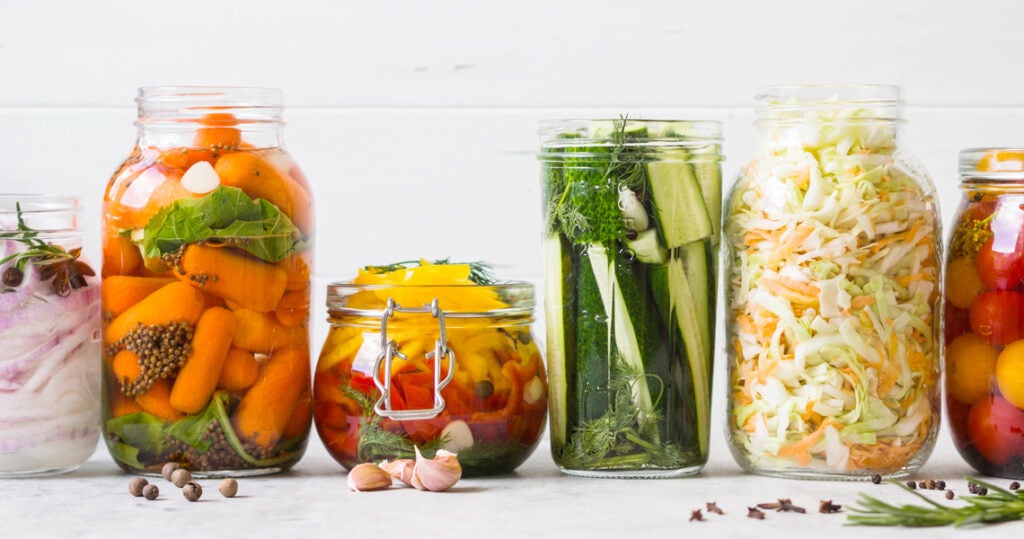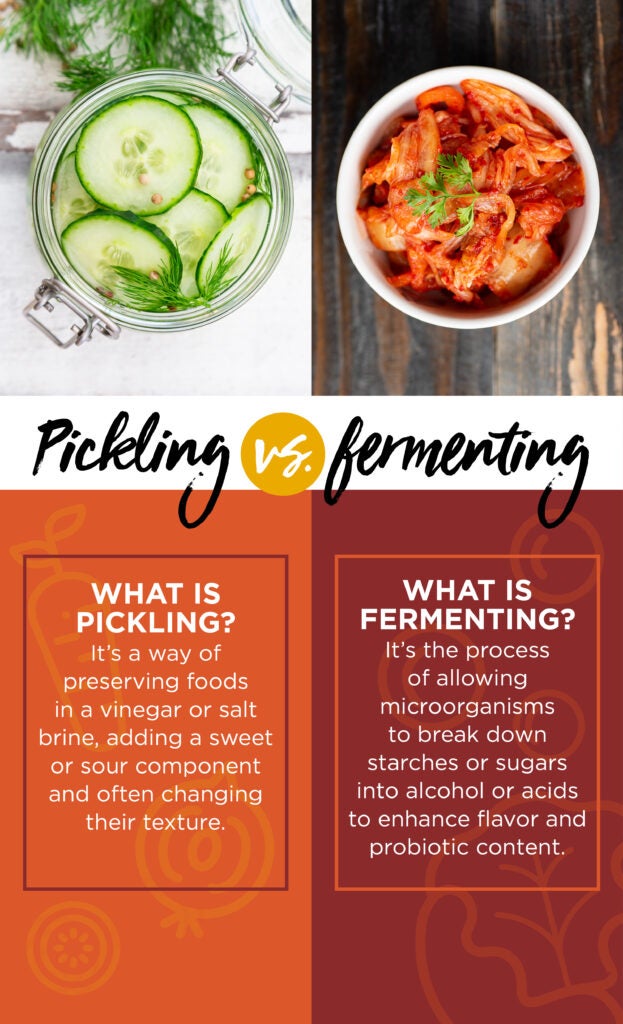What’s old is new again. Pickling and fermenting have been around for thousands of years, and these time-honored food preparations are seeing new life on restaurant menus.
From traditional pickled vegetables (beets, carrots, onions, etc.) and proteins (eggs, meats, and fish, etc.) to funky fermented products (black garlic, soybean paste, mushrooms, etc.), the practices help operators extend the life of foods and bring new flavors to the table.
Research by Datassential in 2022 shows pickled or fermented foods are on 55% of menus. That’s up 3% since 2019, and it’s a number that’s expected to grow as more operators look to add global flavors.
Enhance Menu Selections
Pickled cucumber chips are familiar to anyone who’s eaten a burger. Kimchi — the spicy Korean side dish made with salted vegetables napa cabbage, radishes, garlic, chile peppers and ginger — is a fermented food many dining guests will recognize. It’s also an occasional burger topping.
The trend goes far beyond burger toppings. Boston-area Gordon Food Service Culinary Specialist Derek Seigfried sees pickling and fermenting as a way to flavor almost any dish.
“You can take a product nearing the end of its shelf life and ferment it into a miso or a beverage, using those as ingredients to enhance and supplement menu items,” he said. “I’m starting to see Italian takes and Peruvian takes on fermentation.”
Italian examples include cured meats, such as salami and prosciutto, as well as fermented vegetable giardiniera. From Peru, there’s the red pepper salsa called ají, and the fermented potato pulp drink known as tocosh. The king of non-alcohol fermented beverages is China’s kombucha tea, prized for its probiotic properties and vitamins associated with health benefits.
Feature Local Flavors
Pickling and fermenting not only add a flavor twist to familiar foods, they also can be used to preserve and highlight local ingredients all year long.
“You can pickle almost anything,” said Houston-based Culinary Specialist Erin Copeland. “A simple side of pickled vegetables helps cut the fat or richness of a dish and adds a depth of flavor that’s super tasty.”
Culinary Specialist Kevin Green agrees. He helps Detroit-area restaurant operators incorporate pickling and umami flavor.
“I’ve taken shiitake mushrooms, brined and then dried them and made shiitake bacon as a salad component,” he said.
Don’t Overlook Food Safety
Food preservation requires careful attention to safety. Gordon Food Service Nutrition Resource Center Dietitian Allison Stock recommends these tips.
For Pickling:
- Use salt intended for pickling foods (not iodized table salt).
- Follow a recipe so the brine has the right concentration for the amount of food being pickled.
- Start with safe food. Vegetables should be cleaned, have no cuts or punctures in the skin, and shouldn’t have signs of spoilage.
“You don’t need to pickle just-picked foods,” Stock said. “If you wouldn’t serve the food to guests, then you shouldn’t pickle it, either.”
For Fermenting:
- Follow a trusted recipe — you are trying to create good bacteria and prevent harmful bacteria from flourishing.
- Achieve the right pH level in the first 24 to 48 hours. This varies by food product. Test strips or a pH meter can be used for this process.
- Use a clean, unscratched (or cracked) jar, crock or plastic container, never metal.
- Start with safe food. If you wouldn’t eat it, then don’t ferment it.
- Store it unopened up to three months in the refrigerator, or longer if you use a canning and sealing process. Once opened, use within three days.
A final word of advice: “Check with your local health department. There are federal safety laws, state laws and even county laws … and they are always changing,” Stock said. “What works in Colorado might not be allowed in Chicago or Cook County.”












